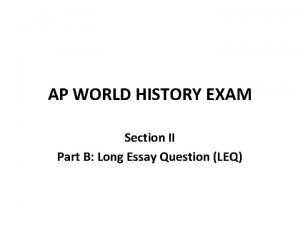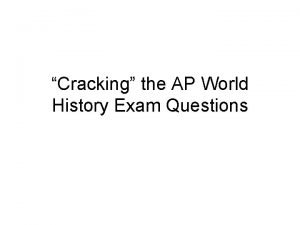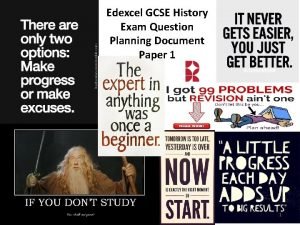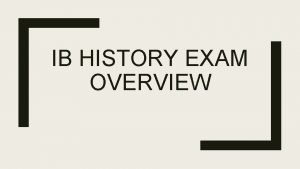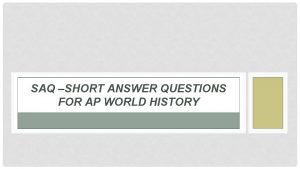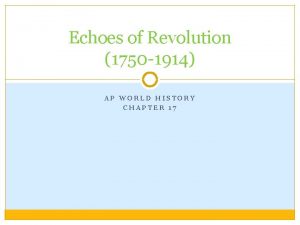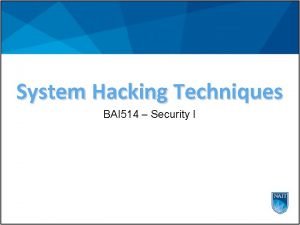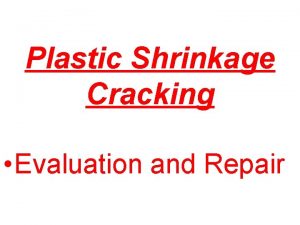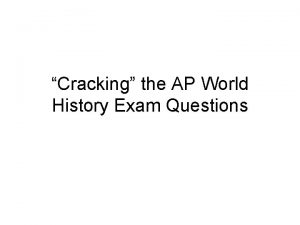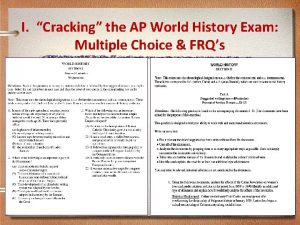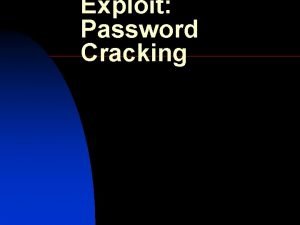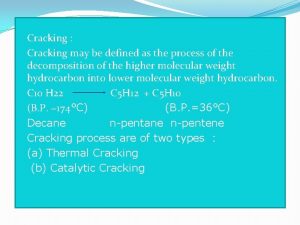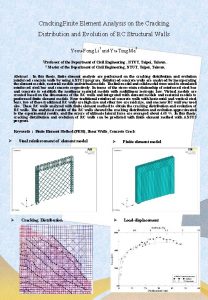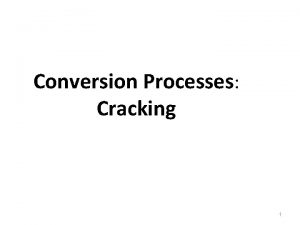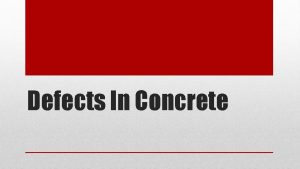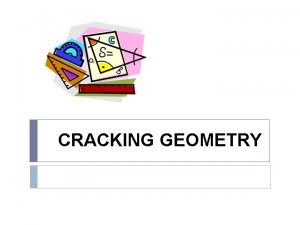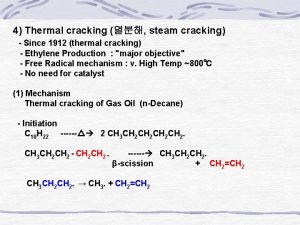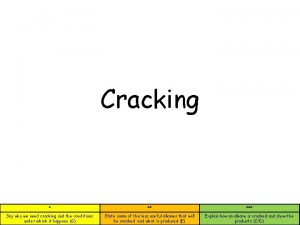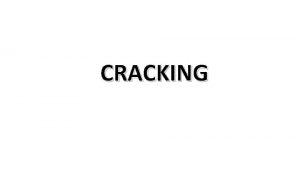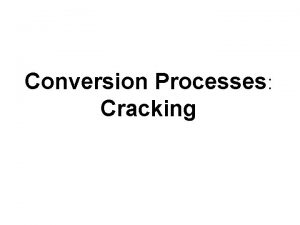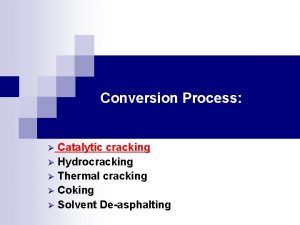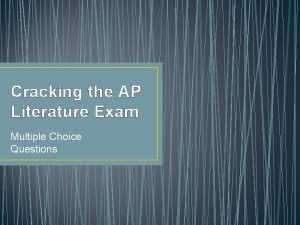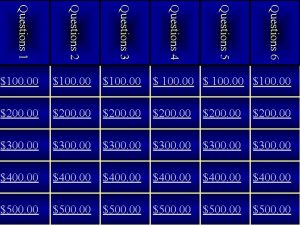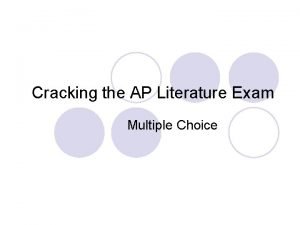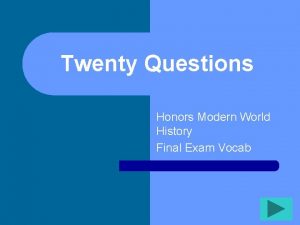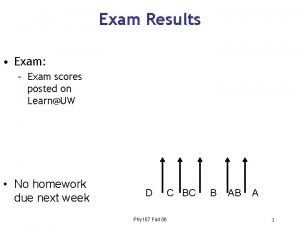Cracking the AP World History Exam Questions THE























- Slides: 23

“Cracking” the AP World History Exam Questions

THE AP WORLD HISTORY EXAM Structure of the Test • The AP World History Exam is divided into two sections: – multiple choice and free response essays. • Section I of the test is comprised of 70 multiple choice questions to be answered in 55 minutes. • Section II of the test begins with a ten minute reading period (time to review the documents you must use for the first essay question), followed by a two hour period to write three essays.

That's a Lot of History • The AP World History Exam divides all history into five major periods from Foundations to the present. • Of course, these five periods cover a huge span of time. • On the Multiple Choice section of the test, the distribution of questions is as follows: Period Percent of Questions Approximate Number of Questions Foundations (c. 8000 B. C. E. 600 c. e. ) 19 20% 13 14 600 1450 22% 15 16 1450 1750 19 20% 13 14 1750 1914 19 20% 13 14 1914 present 19 20% 13 14 Total 70

By the Way • While the multiple choice section of the test asks questions from each of the above periods, these questions do not appear in chronological order. • In other words, when you take the multiple choice part of the exam, you'll basically go through cycles from the Foundations to the present and so on.

WHAT DO THEY WANT FROM ME? • What is the AP World History Exam really testing? – In a nutshell: Can you make connections between different societies over different periods of time? • In other words, for any given period of history, can you explain who was doing what? How did what they were doing affect the rest of the world? What changed about the society during this period of time? – To show what you know about world history, keep this big picture perspective in mind as you study and answer multiple choice questions or construct essays. • To help you do this, keep an eye out for certain recurring themes throughout the different time periods. Specifically, be on the lookout for the following:

Essential Questions • How did people interact with their environment? Why did they live where they did? How did they get there? What tools, technology, and resources were available to them? How was the landscape changed by humans? • What new ideas, thoughts, and styles came into existence? How did these cultural developments influence people and technology (for example: new religious beliefs or Renaissance thought)? • How did different societies get along—or not get along—within a time period? Who took over who? How did leaders justify their power? Who revolted or was likely to revolt? And were they successful? • How did economic systems develop and what did they depend on in terms of agriculture, trade, labor, industrialization, and the demands of consumers? • Who had power and who did not within a given culture and why? What was the status of women? What racial and ethnic constructions were present?

WELL, WHAT DO YOU KNOW? • To do well on the multiple choice section of the AP World History Exam, you need to know two things: – (1) world history (ala Advanced Placement), and – (2) how to show that you know world history. • One way to prove that you know world history is by correctly answering the number of multiple choice questions necessary to score 3 or above.

Obvious, right? • Then why is it that lots of students who know world history don't get a great score on the test? • Could it be because there are 70 questions to answer in 55 minutes? • Or is it because they know the history but don't know how to wade through the answer choices efficiently?

• Students often don't perform to the best of their ability on the AP World History Exam because in addition to knowing the history, they need to know how to analyze the questions, get rid of the bad answer choices, and find the correct answer in a short period of time.

How to Show What You Know • To score your best on the multiple choice section of this test, you first need to remember the follow ing rules: – There is no such thing as a "guessing penalty"; rather, there is a guessing reward. – Finishing is not the goal; accuracy is. – Four out of every five answer choices you read are wrong.

Turning the Guessing Penalty into a Reward • The AP World History Exam contains what is commonly called a guessing penalty. • On all multiple choice questions, you lose one quarter of a point for each wrong answer. • The "penalty" is meant to deter you from randomly guessing on questions that you have no clue about. • However, this does not mean you should never guess. • In fact, taking smart guesses can substantially increase your raw score on the multiple choice section of the test.

• You should take your best guess as long as you can eliminate even one answer choice. Guess aggressively! • Guessing also raises your score because it saves you time. – Seventy questions in 55 minutes is a lot. it's about 45 seconds per question. How can you possibly answer that many questions in that period of time? Two ways: Guess and Go, or Don't.

Guess and Go • Consider the following thought processes of two AP World History test takers on the following question: 1. Signed in 1215 C. E. , England's Magna Carta was a document that (A) increased the wealth of the European nobility (B) intensified the conflict between the church and state (C) established England as a monarchy under King Richard (D) guaranteed individual liberties to all men (E) contained articles that were the foundation for modern justice Student One Student Two The Magna Carta—I know it was that charter England in the 1200 s that made the king accountable for his actions so the answer can't be (A) 1. who was that king? Was it John? I think so. That gets rid of(C). Now, is it more accurate to say the original document guaranteed individual Liberties to all men or that some of the articles became foundations for modern justice. Individual liberties for all men. . . hmmm. . . foundations for modern justice. Both sound possible. Was it liberties for ' men? I thought so but maybe not or not all men or not at the time. Did the Magna Carta influence modern justice? I think so but in what way exactly? Could it be described as foundational to modern Justice? Hmmm. . The Magna Carta—that charter in England in the 1200's that made the king accountable for his actions. Cross off (A), cross off(B). The king was. . . John. . . yeah, King John. That gets rid of(C). (D). . . hmmm. . . did the Magna Carta guarantee individual liberties to all men? Maybe, not sure so leave it. (E). . . did it contain articles that became foundations of modern justice? Could have. Guar anteed for all men or foundations of modern justice? I'm not sure, but I think (D) is too strong— guaranteed/or all men. I'll guess (E). Next question. The printing press was invented by Gutenberg sometime near the Reformation. Cross off (A) and (D). . .

• In the previous scenario, Student One continues to deliberate between (D) and (E) while Student Two goes on to the next question. – What's the difference? • Student Two did all the work he could, considered the remaining options, then took a smart guess and moved on. • Student One did all the work he could, then got stuck trying to make a decision between the two remaining options. • As the test progresses, Student One will lag further and further behind Student Two, not because he knows less world history, but because he is less willing to take that guess and move on. • To do well on the AP World History Exam, you need to do what you can but then be willing to take your best guess and move on to the next question.

Or Don’t • This is not to imply that rushing through the test is the goal. • In fact, focusing on finishing the section is the wrong goal all together. • Your goal on the multiple choice section of the AP World History Exam is to work accurately and efficiently. – Do the questions you can correctly so that you can earn a solid raw score. – To do so, you may never even attempt some of the questions.

Process of Elimination • Every time you read an AP World History Exam question, remember that four of the five answer choices you are reading are wrong. • Use the Process of Elimination (POE) to get rid of what you know is wrong as you go through the choices. • Then deal with any answer choices you have left. • For most questions you will be able to eliminate two to three answer choices relatively quickly. • That leaves you with two choices to consider and then take a smart guess between.

Process of Elimination • If you can't eliminate any answers, it's best to skip the question altogether. • Mark these skipped questions in some distinctive way so that you can come back to them later if you have time, and make sure you leave a space on your answer sheet. • Always keep in mind that the multiple choice section is difficult, if not impossible, for most students to finish. Focus on accuracy as you work through this section.

HOW TO CRACK AP WORLD HISTORY MULTIPLE-CHOICE QUESTIONS Take a look at a sample AP World History Exam question: 3. When the Europeans arrived in sub Saharan Africa in the 1400's and 1500's, the African slave trade was (A) just beginning (B) an institution the Europeans had to establish (C) well established and about 500 years old (D) still under the control of Muslim traders (E) not economically viable and did not interest the Europeans

Step 1: Read the Question and Put It in Your Own Words • First you must make sure that you understand what the question is asking. • Read the sample question again. – What is it really asking? • If you are having trouble figuring it out, answer the questions • When? , Who? , What? – For example, in the above question about slave trade, you can answer the following:

• When? 1400 1599 • Who? Europeans and sub Saharan Africa • What? Slave trade • Then, rephrase the question so that it is clear to you. – What was up with the African slave trade in the 1400 1500 period?

Step 2: Answer in Your Own Words • Once you've rewritten the question, take a moment to call up the relevant history that you know. • If it is a topic you know well, it will be easy to come up with an answer. – If you can't come up with a full answer, think of a few key points that you do know about the topic. – Here's an example of what you might know about the slave trade from 1400 1500. • It already existed in both Africa and Europe, so it wasn't new. • If you can't answer the question completely, you can still use what you do know to get rid of wrong answer choices using the Process of Elimination.

Step 3: Process of Elimination • Even if you do not know exactly what was going on with the slave trade in the 1400's and 1500's, you can use the little you do know to eliminate wrong answer choices. • Remember to read each answer choice with a critical eye, looking for what makes it wrong. • Cross off the choices that you know are wrong; leave ones that you are uncertain about or you think are right.

Step 4: Guess and Go • Once you've narrowed down the choices as far as you can, take a guess. • As you learned, the guessing rewards students who are willing to take smart guesses throughout the test. • If you use POE to get rid of choices that you know are wrong and then take a smart guess from among the remaining answer choices, you will score your personal best on this test.
 World history spring final exam review answers
World history spring final exam review answers World history final exam study guide
World history final exam study guide World history semester exam
World history semester exam Ap world history jeopardy review game
Ap world history jeopardy review game Ap world history exam format
Ap world history exam format Ap world course and exam description
Ap world course and exam description Ap world exam format
Ap world exam format World history semester 1 final exam study guide answers
World history semester 1 final exam study guide answers Chemistry fall semester exam review answers
Chemistry fall semester exam review answers World history semester exam
World history semester exam Gcse history past papers edexcel
Gcse history past papers edexcel Ib history exam
Ib history exam Ap world history chapter 25 africa and the atlantic world
Ap world history chapter 25 africa and the atlantic world Dangerous world tour
Dangerous world tour World history jeopardy
World history jeopardy Tea saq format
Tea saq format History saq
History saq Saq format
Saq format Abolitionist movement ap world history
Abolitionist movement ap world history World history warm up questions
World history warm up questions World history warm up questions
World history warm up questions Whip-cracking in the czech republic and slovakia
Whip-cracking in the czech republic and slovakia Password cracking definition
Password cracking definition Aci crack repair
Aci crack repair




